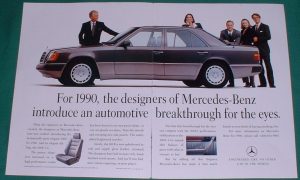Advertising: Age of Persuasion
Elaboration Likelihood Model
(Richard E. Petty / John T. Cacioppo)
Central Route
- “Persuasion may result from a diligent consideration of issue-relevant arguments.”
- Central route emphasizes such factors as:
- Comprehension, learning, retention of message arguments, or even self-generation of arguments.
Peripheral Route
- “Using the peripheral route, we may shape attitudes or allow a person to decide what attitudinal position to adopt without the need for engaging in any extensive issue-relevant thinking.”
- “In an overcommunicated world, we need to become “cognitive misers.”
- Relevant for persuasion goals is this case the use of:
- positive or negative emotional cues,
- the credibility , attractiveness or power of the message source,
- heuristics.
The Over-Communicated Society
“Communication Overload”
- New York Times (Sunday Edition) contains about 500,000 words. To read the whole newspaper, you will need almost 100 hours.
- 96% of all TV households can receive 4 or more TV stations.
- The average American Family watches Television more than 7 hours a day (51 hours a week).
- The Business of Persuasion
- The US consumes 57% of world advertising (5% of world population)
- Over $ 165 billion a year on advertising
- Over $ 115 billion a year on product promotion (coupons, free samples, rebates, …)
- 2.2% of US gross national product.
- General Motors spends every year more than $ 178 millions to promote Chevrolet (that is $ 487,000 a day, $ 20,000 an hour).
The Over-Simplified Mind
- The defense of the individual against the communication overload is an oversimplified mind.
- Sensory Overload:
- Beyond a certain point, our brain goes blank.
- The individual has to filter the information that comes to him.
- Al Ries:
- “We are publishing more than ever, but we are reading less than ever.”
The Over-Simplified Message
- In modern communication, less is more.
- Simplification is a selection process. You will have to select the material that has the best chance to get through and to reach your audience.
- You don’t have to look for the selection criteria in the characteristics of the product.
- You have to look for the solution into the prospect mind. That means you concentrate your message on the perception of the prospect.
Creating Values






Irritation
- When the message may break the unspoken laws of public opinion or offend the sensibility of the more concrete public that represents your target audience.
- Boomerang Effect
Benetton Controversial Campaign




Click here to see some examples of irritating commercials.
